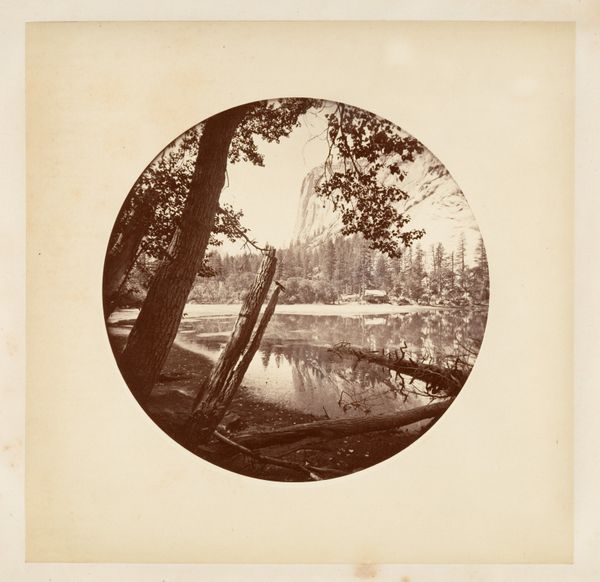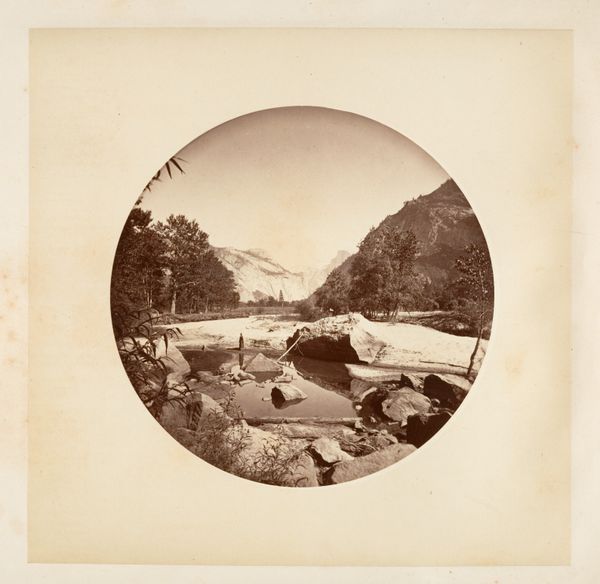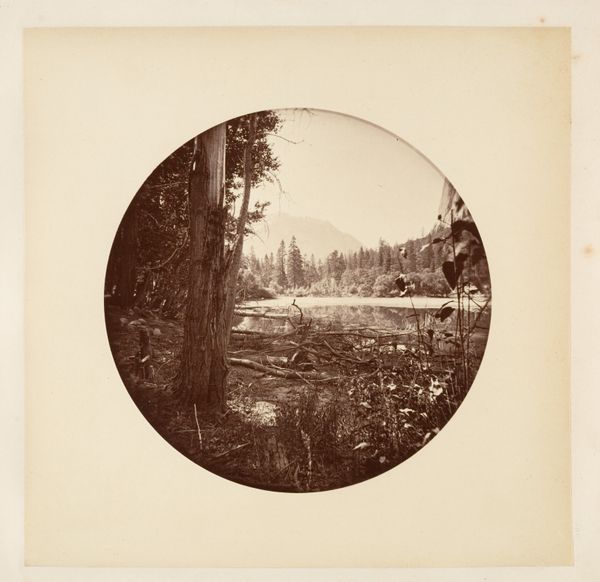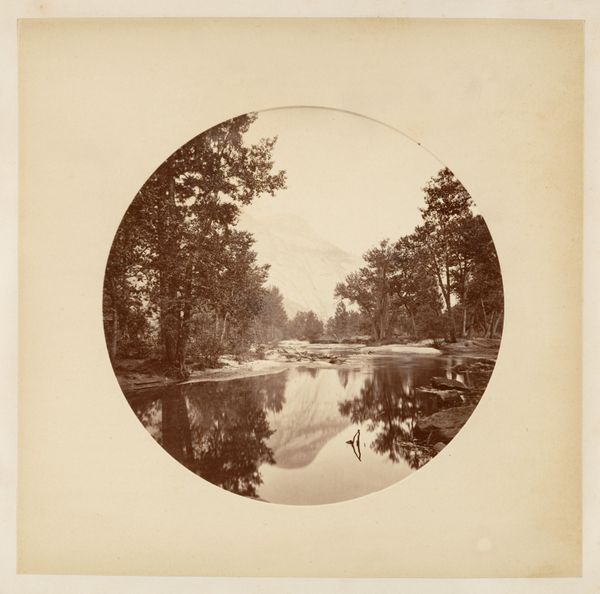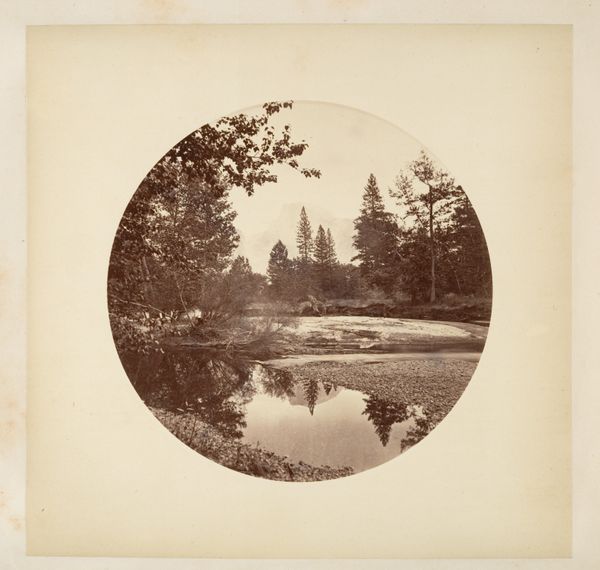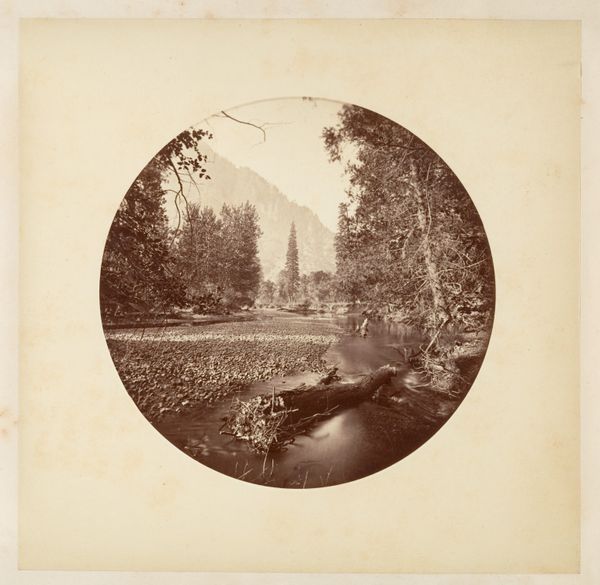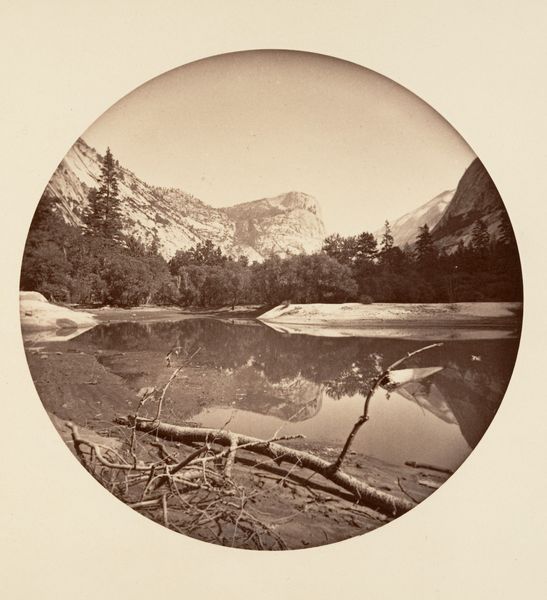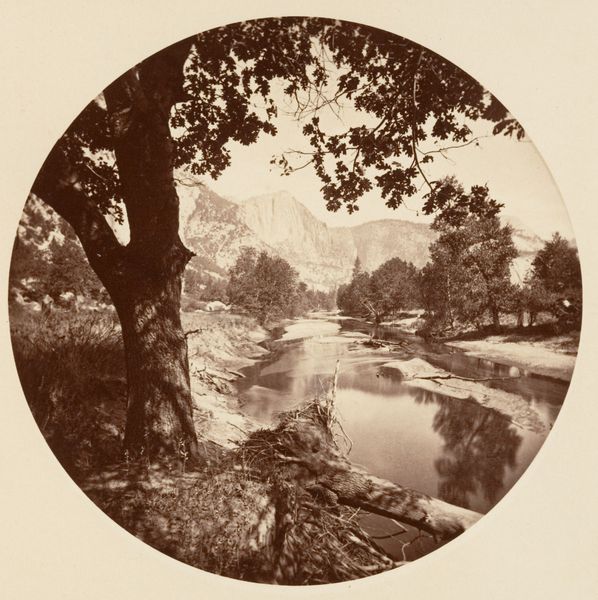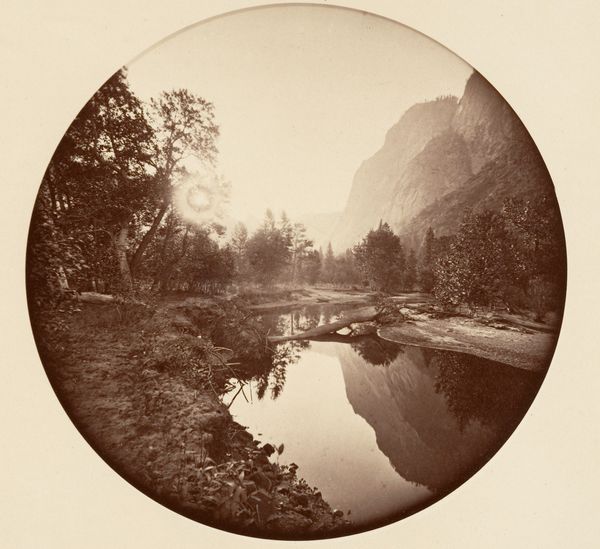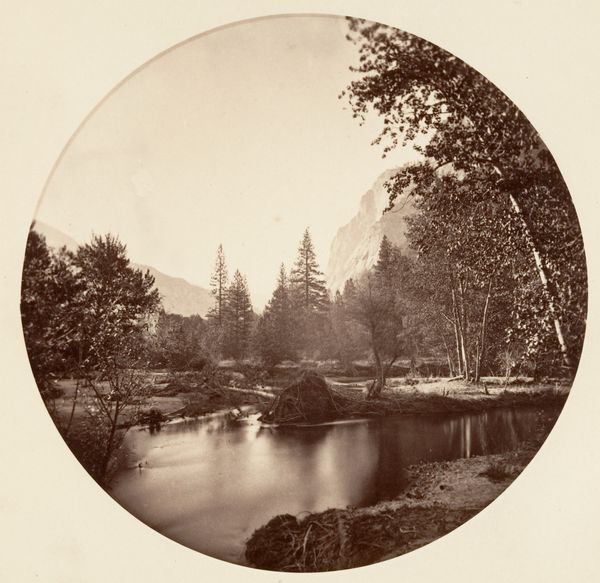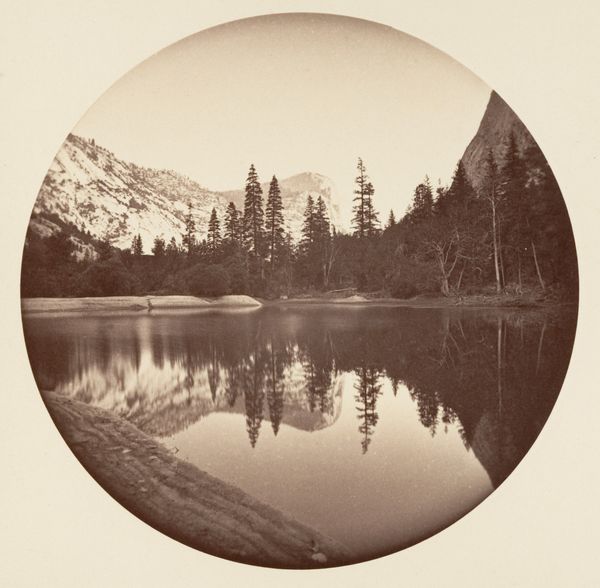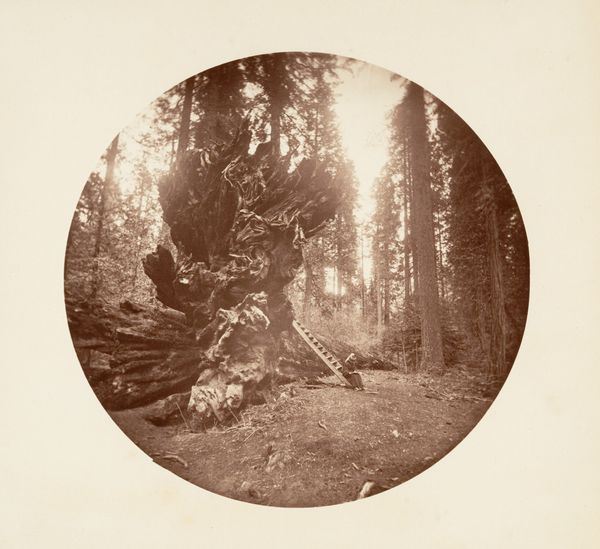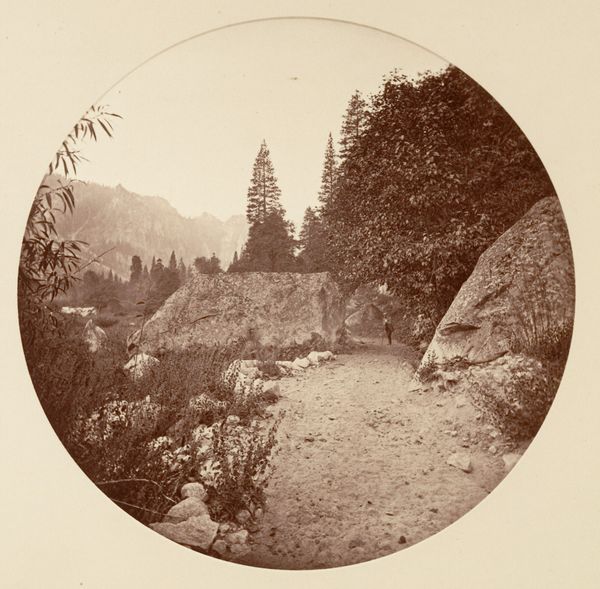![[Yosemite National Park, California] by Carleton E. Watkins](/_next/image?url=https%3A%2F%2Fd2w8kbdekdi1gv.cloudfront.net%2FeyJidWNrZXQiOiAiYXJ0ZXJhLWltYWdlcy1idWNrZXQiLCAia2V5IjogImFydHdvcmtzL2VkNjVmZjRhLTk4YjMtNDE1OS1iNWU2LWYzMGQ4YTFhYjU1MS9lZDY1ZmY0YS05OGIzLTQxNTktYjVlNi1mMzBkOGExYWI1NTFfZnVsbC5qcGciLCAiZWRpdHMiOiB7InJlc2l6ZSI6IHsid2lkdGgiOiAxOTIwLCAiaGVpZ2h0IjogMTkyMCwgImZpdCI6ICJpbnNpZGUifX19&w=3840&q=75)
Dimensions: Image: 12.5 x 12.5 cm (4 15/16 x 4 15/16 in.), circular Album page: 24 x 25.1 cm (9 7/16 x 9 7/8 in.)
Copyright: Public Domain
Carleton Watkins made this photograph of Yosemite National Park in California using the wet collodion process. This technique, popular in the mid-19th century, required Watkins to coat a glass plate with chemicals, expose it in a large format camera, and then develop the image, all before the plate dried. The resulting albumen print has a remarkable tonal range, capturing the light reflecting off the water and the textures of the surrounding landscape. Watkins's choice of the wet collodion process wasn't just about aesthetics; it was also about commerce. His stunning photographs played a crucial role in convincing Congress to protect Yosemite as a national park. Consider the labor involved in producing these images. Transporting bulky equipment, preparing chemicals in the field, and the skill required to master the process. Watkins transformed the wilderness into a commodity, influencing public opinion and ultimately contributing to the birth of environmentalism. It reminds us of the complex relationship between art, industry, and our understanding of the natural world.
Comments
No comments
Be the first to comment and join the conversation on the ultimate creative platform.
